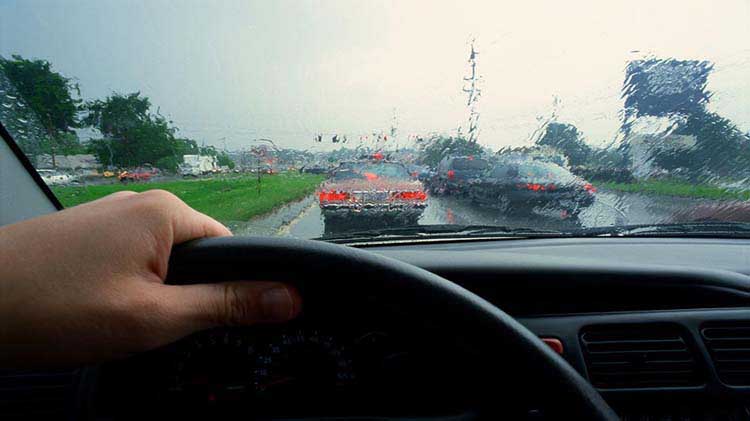8 Tips for Driving Safely in Rain

The worst conditions that the majority of drivers will encounter frequently involve rain and slick roads. Every time it begins to rain or even if the roads are still wet from a recent deluge, there are increased dangers and risks. When it starts to rain, many drivers will just slow down as their only safety measure. While slowing down is an essential part of driving safely in a slick environment, there are various other strategies or factors that drivers must be aware of.
- Operate a clean, well-maintained car
It’s crucial that your car doesn’t obstruct your vision when visibility is restricted by inclement weather. Clean the outside and inside of windows and windshields once a month, and inspect the wiper blades for wear. Once a week, check the washer fluid level.
Before starting the automobile each day, performing a short inspection of the headlights, taillights, turn signals, and tire treads. It is a ticketable infraction to operate without [signal lights] whether it is raining or not.
2. Know The Lanes
Use additional caution if you’re new to an area during or after a storm because roads are constructed to endure various weather conditions in different sections of the country. According to Solomon, “the asphalt isn’t as compacted” in several southern states. This implies that it may rain even though the road appears to be completely dry. You’ll squeegee up the water that has become trapped in the road aggregate, and before you know it, your tires are slippery and wet.
Consider your route for a bit, too. You should probably take the freeway if the route crosses low-lying bridge underpasses or prone-to-flooding ditches.
3. Switch On Lights, Not Brights
Despite the fact that many more recent vehicles have automated running lights, turning on your headlights will also turn on your taillights when you use your windshield wipers. According to Solomon, the purpose of headlights is to improve visibility for other drivers. “You can recognize all four corners of the vehicle when your headlights and back lights turn on.”
You don’t need to turn on your brights, though, as the brighter light will merely bounce back into your eyes from damp surfaces and annoy other drivers.
4. Go slowly!
Don’t feel obligated to drive the official speed limit; instead, leave at least five seconds between your car and the one in front. If the road is wet, the speed stated on the side of the highway may be too high for the conditions, according to Solomon. “The speed [given] on the side of the highway is the maximum speed for perfect weather and excellent road conditions.” “They can pass you if other people don’t like it.”
And keep in mind: avoid using cruise control on slick surfaces. If you hydroplane while driving under cruise control, the automated acceleration when your tires regain traction could result in you losing control of your car.
5. Don’t dive too far.
The road is too deep to drive on if water is covering the road markings. Solomon claims that three inches of water on the road is all it takes to lose control. Furthermore, even if you maintain control, a bigger car may push part of that water below your car, stalling your engine.
6. Wherever You Want To Go, Steer
Turn the wheel in the direction you want to go if you’re traveling too fast and wind up hydroplaning (which Solomon refers to as surfboarding or waterskiing because “that’s what you’re doing”), and don’t be terrified if you don’t steer out of the skid on the first attempt. To reorient, it can take three to five changes (and a little while longer for your heart to stop pounding).
7. Avoid Making Extra Trips
Ask yourself if you’ve driven in this kind of weather before and if you’re prepared to manage it right now. It’s one thing if you have to hurry home to your kids or you’re already on the road. According to Solomon, “a lot of folks feel they have to go to the store” when inclement weather is predicted. It is OK to stay at home during a severe downpour, just as you would in a heavy snowfall. Make plans for workers to work from home if your small business is in a flood-prone location and there is a lot of precipitation forecast so they won’t have to worry about making the drive.
8. Be aware that brakes can be affected by water.
Driving through deep water can particularly weaken the stopping strength of wet drum type brakes.






